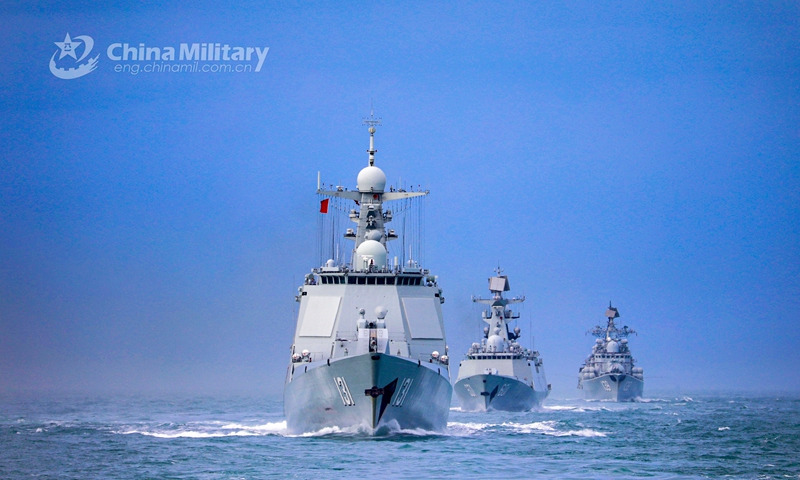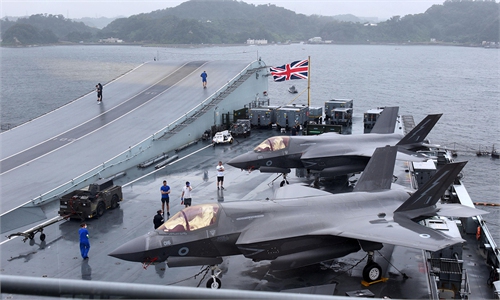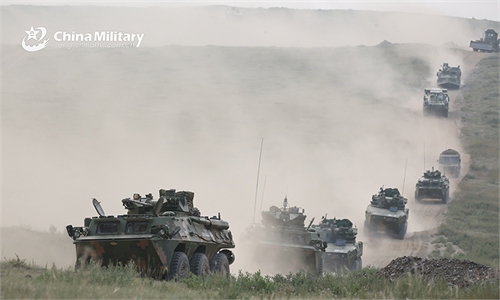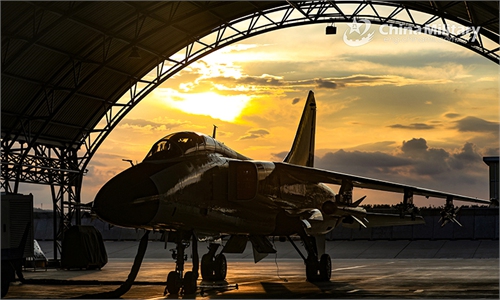
A naval fleet comprised of the guided-missile destroyers Ningbo (Hull 139) and Taiyuan (Hull 131), as well as the guided-missile frigate Nantong (Hull 601), steams in astern formation in waters of the East China Sea during a maritime training drill in late January, 2021. Photo:China Military Online
A destroyer flotilla of the Chinese People's Liberation Army (PLA) reportedly sailed in the waters between the island of Taiwan and some islands of Japan in the past week. Chinese analysts said the move sent a warning to Japanese right-wing forces and Taiwan secessionists, at a time when the two have been colluding to sabotage peace and stability in the region.
The Japan Maritime Self-Defense Force spotted a PLA Navy flotilla consisting of the Type 052D destroyer Zibo and the Sovremenny-class destroyer Hangzhou, as they sailed through the Miyako Strait, which is between Okinawa Island and Miyako Island, and then headed south into the Pacific Ocean on September 3, according to a press release from Japan's Ministry of Defense Joint Staff on Wednesday.
On Sunday, these warships joined up with the Type 052C destroyer Zhengzhou and sailed north through the waters between Island of Taiwan and Yonaguni Island, returning to the East China Sea, the Japanese press release said.
While Japan claimed to have deployed forces to monitor the Chinese naval movements, the Japanese forces failed to obtain a photo of the Hangzhou or the Zhengzhou.
On August 24, another PLA naval flotilla sailed through the Miyako Strait, but it returned by the same route on August 26, according to press releases by Japan's Ministry of Defense Joint Staff at the time.
Japanese Defense Minister Nobuo Kishi claimed in an interview with the Mainichi Shimbun on Tuesday that Japan could not stay outside developments in Taiwan as both shared universal values such as freedom and democracy, Taiwan News reported on the day.
Japan's latest defense white paper, released in July, for the first time mentioned stability in the Taiwan Straits, claiming it is "threatened by increasing military pressure from the Chinese mainland." The white paper also said that "stabilizing the situation surrounding Taiwan is important for Japan's security and the stability of the international community."
Analysts said that Japan is using the Taiwan question to normalize its military deregulation and break its pacifist constitution, while also sending a wrong signal to Taiwan secessionists who are encouraged to make more provocative moves.
The PLA warships displayed China's determination and capability to countries like Japan and the US, which attempt to interfere in the Taiwan question, Xu Guangyu, a senior adviser to the China Arms Control and Disarmament Association, told the Global Times on Thursday.
The moves will help safeguard peace and stability in the region by deterring Japanese right-wing forces and Taiwan secessionists, Xu said.
In the meantime, China does not need to regard Japan as so important that it reacts to every provocation militarily, since Japanese authorities have their own agenda like the election, Xu said, noting that the PLA should develop at its own pace.
On Sunday, the day that the three PLA warships returned to the East China Sea from the east of the island of Taiwan, 19 PLA aircraft, most of them fighter jets and bombers, entered Taiwan's self-proclaimed southwest air defense identification zone, the island's defense authorities said in a press release that day.




